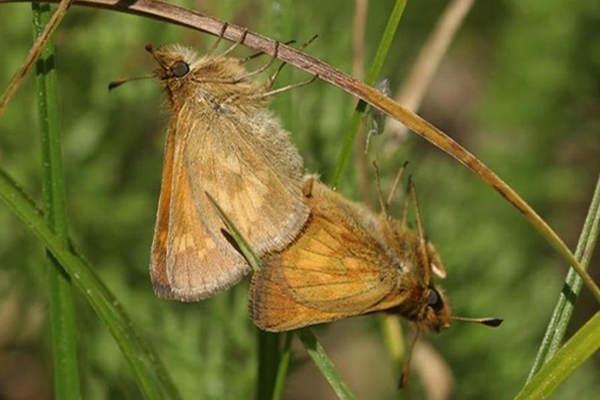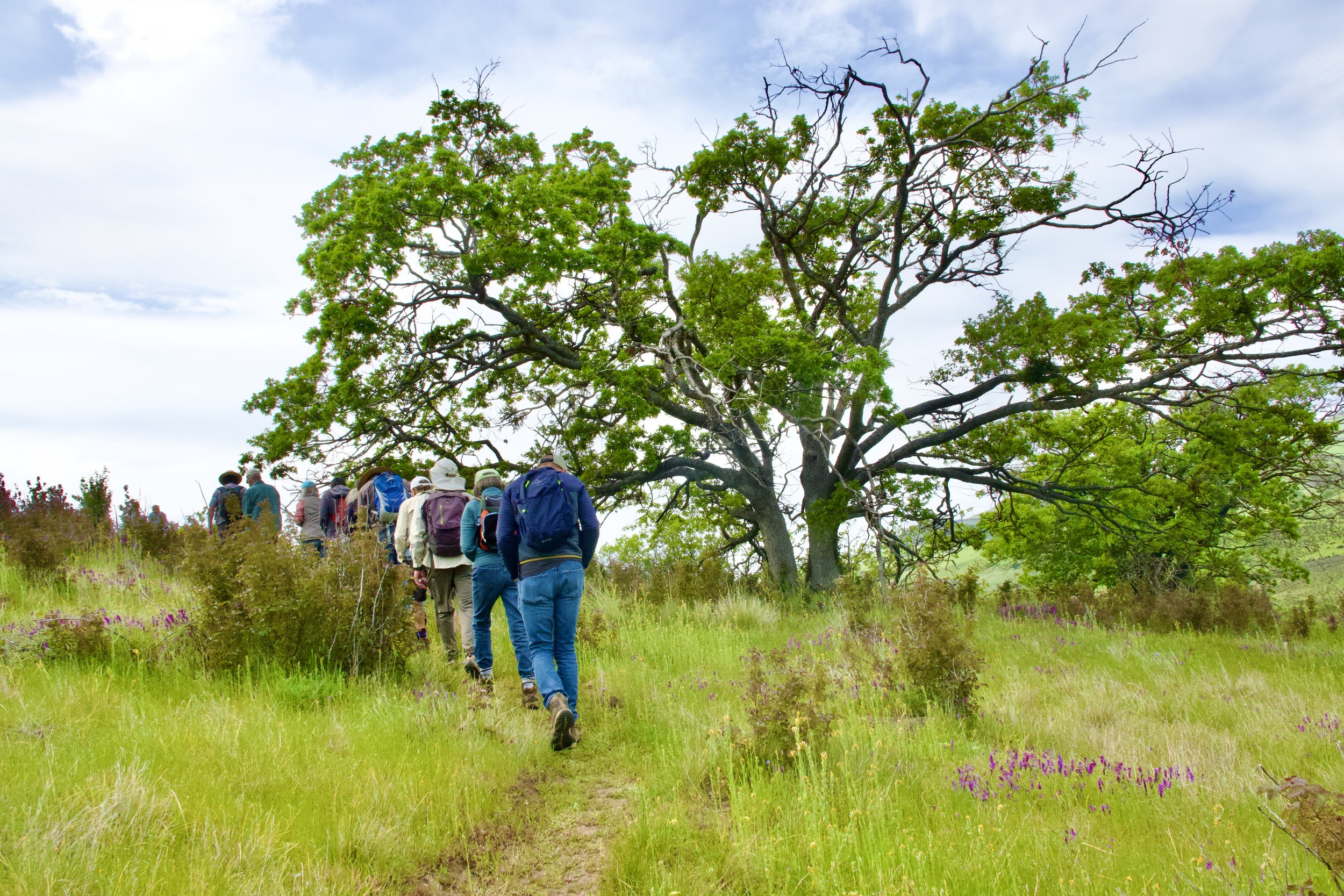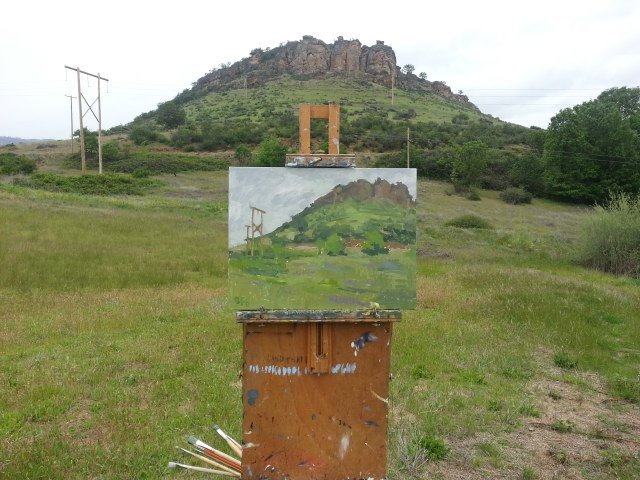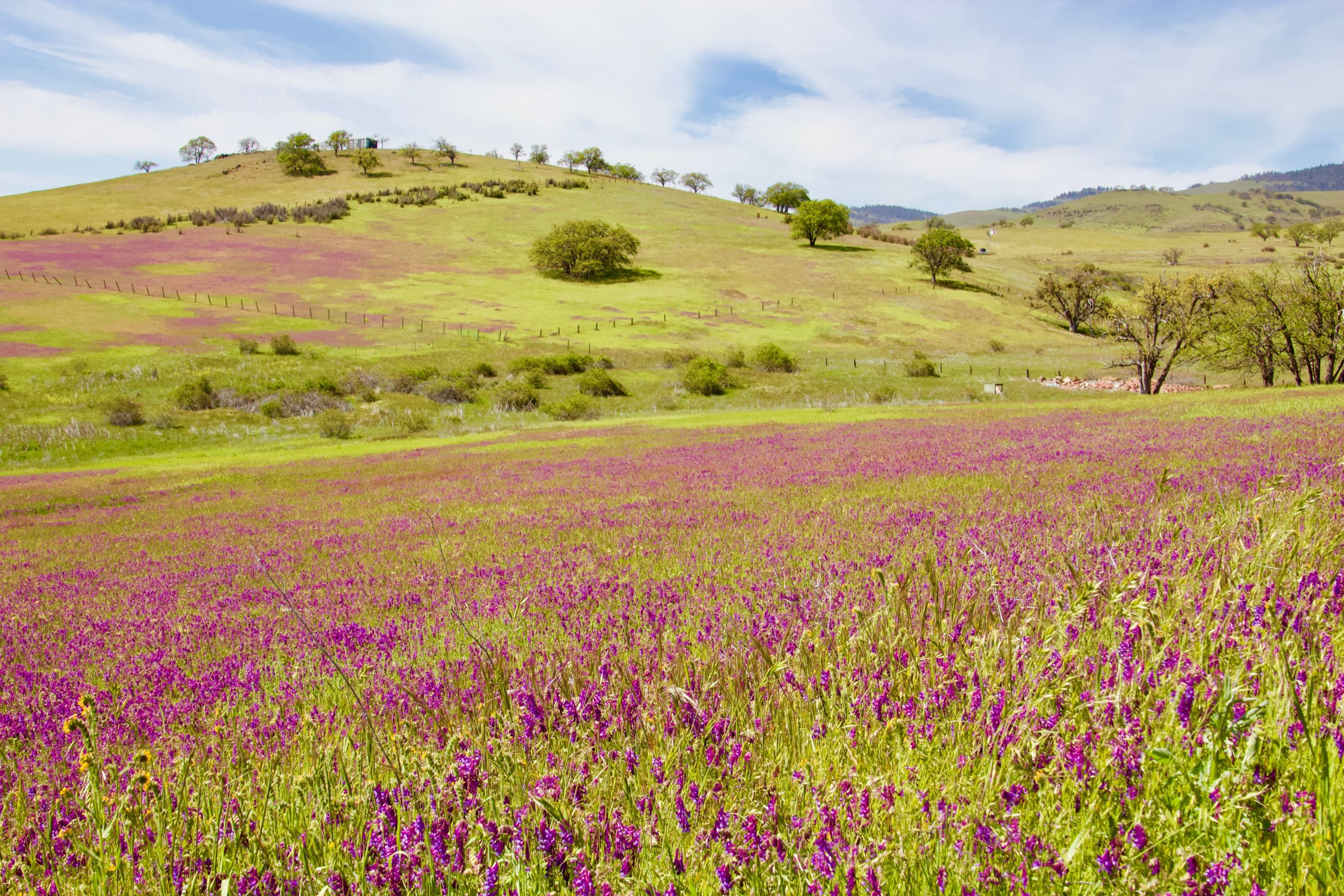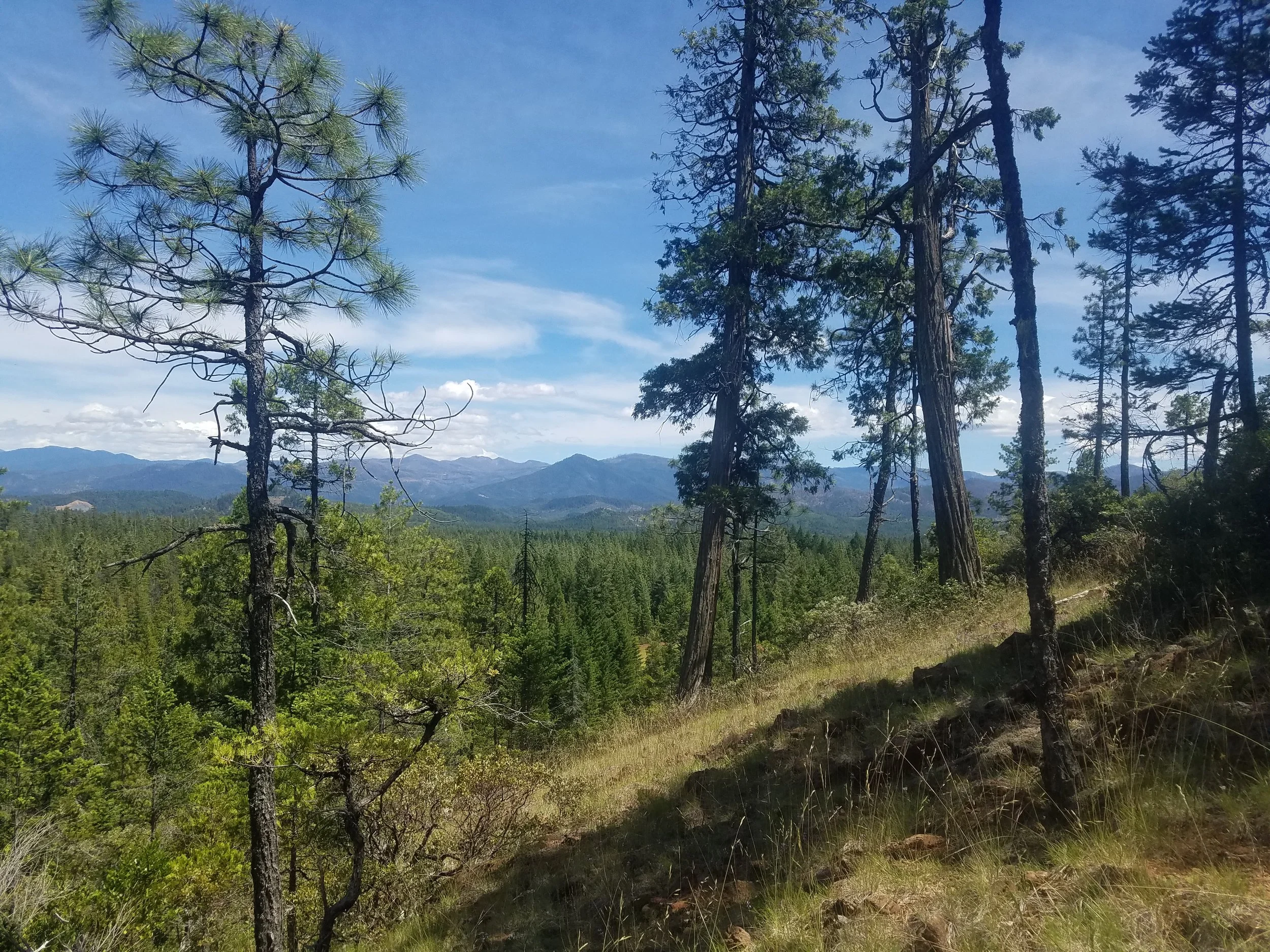Bunchgrasses - The inspiration behind SOLC’s modern logo
This article was written in our "The Good, the Bad and the Unusual" column for our monthly eNews. Subscribe to eNews at the bottom of any of our webpages.
By Kristi Mergenthaler, SOLC Stewardship Director, February 2018
The Good: Significant habitat
With a tuft of evergreen basal leaves and seasonal flowering stalks, native perennial bunchgrasses hold the soil with deep roots, provide overwintering sites for bumble bee queens, and store significant amounts of carbon and supply food. They provide breeding sites, and other resources for wildlife. Bunchgrass meadows are very pleasing to the eye, with grassy tussocks interspersed with showy spring flowers. Good places to still see them are Jeffrey pine savannas and meadows on serpentine soils in the Illinois Valley, under the canopy of intact oak woodlands (see above banner photo), and in some subalpine meadows along the Siskiyou Crest. The Colestin Valley is also a bunchgrass hot spot and native grassland patches persist at the City of Ashland Imperatrice property in the Cascade Foothills. There are numerous species, but some common bunchgrasses include Roemer’s fescue (formerly called Idaho fescue) with striking blue-green leaves, Lemmon’s needlegrass in openings, and the robust and beautiful California fescue growing in forests and mixed woodlands.
Resilent Lemmon's needlegrass sprouting post prescribed-burn at The Nature Conservancy's Agate Desert Preserve, Central Point.
Bunchgrass with a green tuft of leaves and last year's flowering dried stalk.
The Bad: Loss of biodiversity
During the colonization of the West, annual nonnative grasses like cheat grass, hedgehog dogtail, soft brome, ripgut, and medusahead followed right behind migrating Euro-Americans. Greenish hills, once supporting bunchgrasses, were transformed to golden brown in the summer as the nonnative annual grasses invaded, set seed, and died in late spring. How did this landscape-scale transformation take place? Bunchgrasses are very sensitive to overgrazing and are a preferred “ice cream” plant for cattle. Once a site was overgrazed, nonnative grasses from Eurasia filled the void from both intentional and accidental introductions. These invasive plants provide little forage, modify the natural fire ecology, increase fast-moving wildfire hazard, and impair biodiversity – reducing the number of native plants and the pollinators and animals that depend on them. Medusahead is especially nasty. The stalks, high in silica, persist for years forming a thatch that native plants can’t penetrate.
Mardon skipper recovery area in the Cascade-Siskiyou National Monument. Photo by Crystal Nichols.
The Unusual: Host plant for rare & cute butterflies
Big eyed, tawny-orange, and inexplicably adorable, Mardon skippers are an imperiled butterfly species with a very patchy distribution. They are primarily found in the Cascade-Siskiyou National Monument in our region. These little skippers love bunchgrasses; locally, the females ONLY lay their eggs on fescue bunchgrasses. The larvae feed on native grasses for a few months, overwinter, and then pupate into small (yet fat and furry-bodied) adults the following spring. The adults like to nectar on penstemon, purple violet, lupine, and native and nonnative vetches. Unlike the famous migrating monarchs, these skippers are tied to one place, and require intact native grasslands.
Mardon skipper butterfly. Photo by Tom Kogut, U.S. Forest Service



